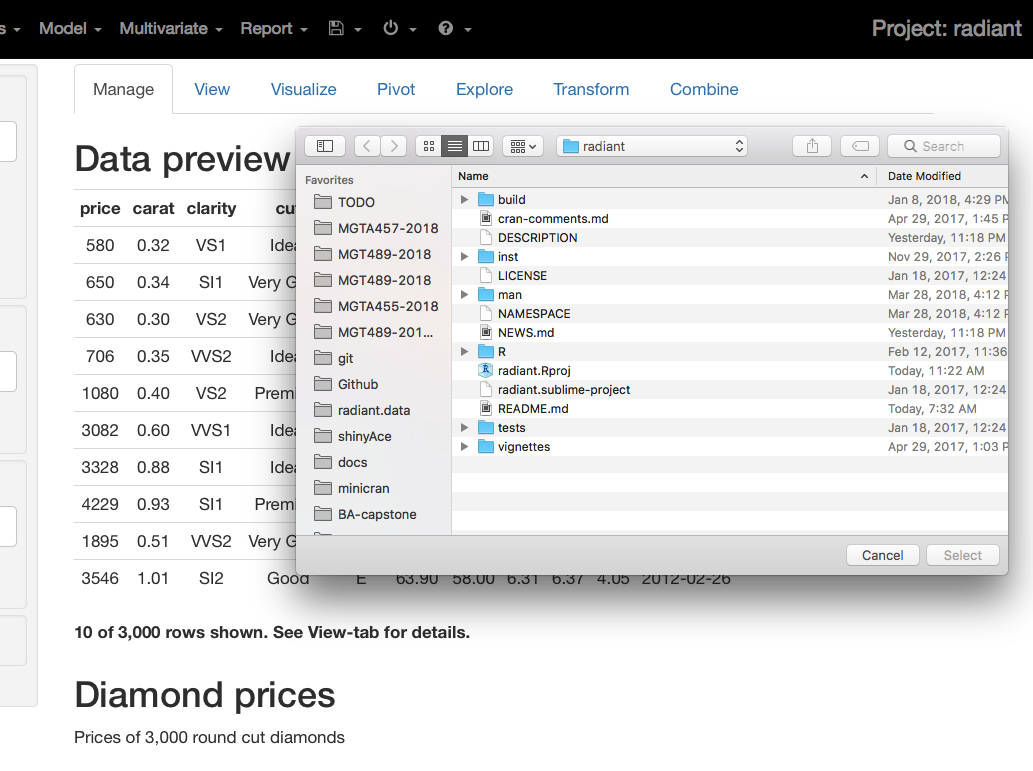

This variable name is used in the application development and not seen by the user. The character string assigned to the inputId argument will be the variable name used to access the value(s) selected or provided by the user. All widget functions, at minimum, include an inputId and label argument. In the subsequent development we’ll use slider bars, dropdown menus, and check boxes. Shiny package widgets are used to collect user provided inputs (visit the Shiny Widget Gallery to get a sense of the different kinds of input dialogues). There are two ways to do this: 1) use the RStudio button (See Figure 8.2) or 2) type the function runApp() in the RStudio console.

We begin by defining a very basic Shiny application script upon which we can build the desired functionality. Given the namesDF data, our goal over the next few sections is to develop a Shiny application that allows users to explore age distributions for males and females. $ Last : chr "Poole" "Dowd" "Wilkins" "Murray". $ First: chr "Sarah" "Boris" "Jessica" "Diane".

NamesDF <- read.csv( "", stringsAsFactors = FALSE) str(namesDF) 'ame': 200 obs. 11.6 A Summary of Useful graphics Functions and Arguments.8.4.2 Michigan Campgrounds Server Logic.8.4 More Advanced Shiny App: Michigan Campgrounds.7.2 Programming: Conditional Statements.6.2 Reading Data with Missing Observations.4.7.2 Logical Subsetting and Data Frames.4.7.1 Modifying or Creating Objects via Subsetting.4.6.1 Accessing Specific Elements of Lists.4.5.1 Accessing Specific Elements of Data Frames.4.1.2 Accessing Specific Elements of Vectors.3.2.1 Creating and processing R Markdown documents.2.5 Workspace, Working Directory, and Keeping Organized.2.3.2 Basic descriptive statistics and graphics in R.1.6 How to learn (The most important section in this book!).


 0 kommentar(er)
0 kommentar(er)
